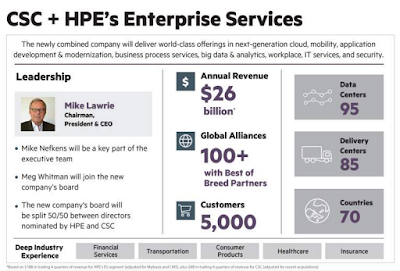The GSMA published a list of seven policy recommendations for Europe to regain a leading position in mobile.
“For Europe to catch up in 4G and become a leader in 5G, a fundamental change in approach to telecoms policy is required,” said John Giusti, Chief Regulatory Officer, GSMA. “We have identified seven critical areas for action that, taken together, can propel Europe to the forefront of the global digital economy and deliver the next wave of mobile innovation to its citizens.”

1. Change objectives of the EU telecoms framework to target investment and sustainable competition in the long term interests of consumers European regulation must aim to achieve consistently higher levels of network investment than it has seen in recent years if it is to achieve Europe’s ambitions in 5G. This is only possible if regulators target sustainable levels of competition to maximise consumer benefits over the long term. The framework should therefore require regulators to promote growth, innovation, and investment in communications markets for the long-term benefit of end users.
2. Deregulate mobile services and refocus policy in relation to spectrum
With new forms of competition in telecoms services markets on the rise, policymakers must seize the opportunity to deregulate and gain a leading role for Europe in 5G. Sector-specific regulation should be withdrawn where competition exists. The “deregulation” initiative should also include the removal of conditions in spectrum licences, such as wholesale access obligations, which are unrelated to the efficient allocation of spectrum.
3. Launch an ambitious mobile cost reduction initiative
The significant increase in investment levels needed to drive a European roadmap to 5G will only be achieved if the costs of mobile network deployment are significantly reduced. The European Commission should examine what can be done to further reduce the costs of mobile network deployment, including the costs of sites, spectrum fees and other input taxes.
4. Focus on what drives high performance
BEREC should lead in developing a better understanding of the factors needed to produce high performing markets that meet the needs of consumers. Regulators should seek to expand the supply of spectrum in order to reduce the need for spectrum caps or other interventions.
5. Allow networks to meet new demands by providing flexibility
The demands placed on mobile networks today are straightforward in comparison with the future requirements of the “Internet of Things”, connected apps and an expected significant growth in data traffic over the next five years. Regulations that set simple, uniform targets for network coverage or that equate network quality with speed will no longer be appropriate or relevant in the future. Net neutrality regulations that ignore the vastly different performance standards required by different applications will inhibit innovation, raise costs and harm consumers.
6. Ensure spectrum rights promote investment
Spectrum policy needs to be growth and investment-focused if Europe is to take a leading role in 5G. We need to simplify and clarify renewal terms and aim to move to perpetual licences in the long term. As more spectrum is released, the need for spectrum caps should reduce, while action is needed on fees, reserve prices and regulatory obligations to ensure that spectrum is licensed in a way that promotes the network investment required to exploit it.
7. Prioritise mobile in delivering wider policy goals
European policymakers should ensure they prioritise mobile when designing policies to address wider goals and the delivery of public services to citizens. Many of these goals will be achieved commercially if the supplementary actions proposed by the GSMA are implemented. If subsidies are required to meet objectives that benefit society as a whole, then they should be met from general taxation.
http://www.gsma.com/
“For Europe to catch up in 4G and become a leader in 5G, a fundamental change in approach to telecoms policy is required,” said John Giusti, Chief Regulatory Officer, GSMA. “We have identified seven critical areas for action that, taken together, can propel Europe to the forefront of the global digital economy and deliver the next wave of mobile innovation to its citizens.”

1. Change objectives of the EU telecoms framework to target investment and sustainable competition in the long term interests of consumers European regulation must aim to achieve consistently higher levels of network investment than it has seen in recent years if it is to achieve Europe’s ambitions in 5G. This is only possible if regulators target sustainable levels of competition to maximise consumer benefits over the long term. The framework should therefore require regulators to promote growth, innovation, and investment in communications markets for the long-term benefit of end users.
2. Deregulate mobile services and refocus policy in relation to spectrum
With new forms of competition in telecoms services markets on the rise, policymakers must seize the opportunity to deregulate and gain a leading role for Europe in 5G. Sector-specific regulation should be withdrawn where competition exists. The “deregulation” initiative should also include the removal of conditions in spectrum licences, such as wholesale access obligations, which are unrelated to the efficient allocation of spectrum.
3. Launch an ambitious mobile cost reduction initiative
The significant increase in investment levels needed to drive a European roadmap to 5G will only be achieved if the costs of mobile network deployment are significantly reduced. The European Commission should examine what can be done to further reduce the costs of mobile network deployment, including the costs of sites, spectrum fees and other input taxes.
4. Focus on what drives high performance
BEREC should lead in developing a better understanding of the factors needed to produce high performing markets that meet the needs of consumers. Regulators should seek to expand the supply of spectrum in order to reduce the need for spectrum caps or other interventions.
5. Allow networks to meet new demands by providing flexibility
The demands placed on mobile networks today are straightforward in comparison with the future requirements of the “Internet of Things”, connected apps and an expected significant growth in data traffic over the next five years. Regulations that set simple, uniform targets for network coverage or that equate network quality with speed will no longer be appropriate or relevant in the future. Net neutrality regulations that ignore the vastly different performance standards required by different applications will inhibit innovation, raise costs and harm consumers.
6. Ensure spectrum rights promote investment
Spectrum policy needs to be growth and investment-focused if Europe is to take a leading role in 5G. We need to simplify and clarify renewal terms and aim to move to perpetual licences in the long term. As more spectrum is released, the need for spectrum caps should reduce, while action is needed on fees, reserve prices and regulatory obligations to ensure that spectrum is licensed in a way that promotes the network investment required to exploit it.
7. Prioritise mobile in delivering wider policy goals
European policymakers should ensure they prioritise mobile when designing policies to address wider goals and the delivery of public services to citizens. Many of these goals will be achieved commercially if the supplementary actions proposed by the GSMA are implemented. If subsidies are required to meet objectives that benefit society as a whole, then they should be met from general taxation.
http://www.gsma.com/






















































